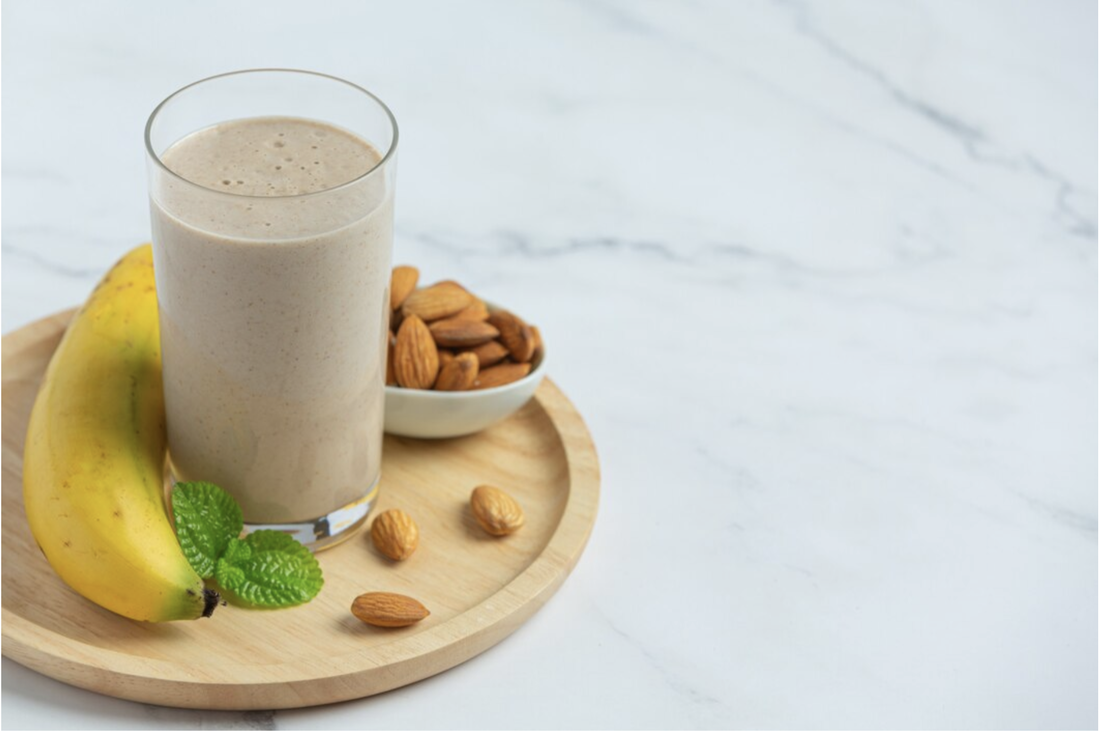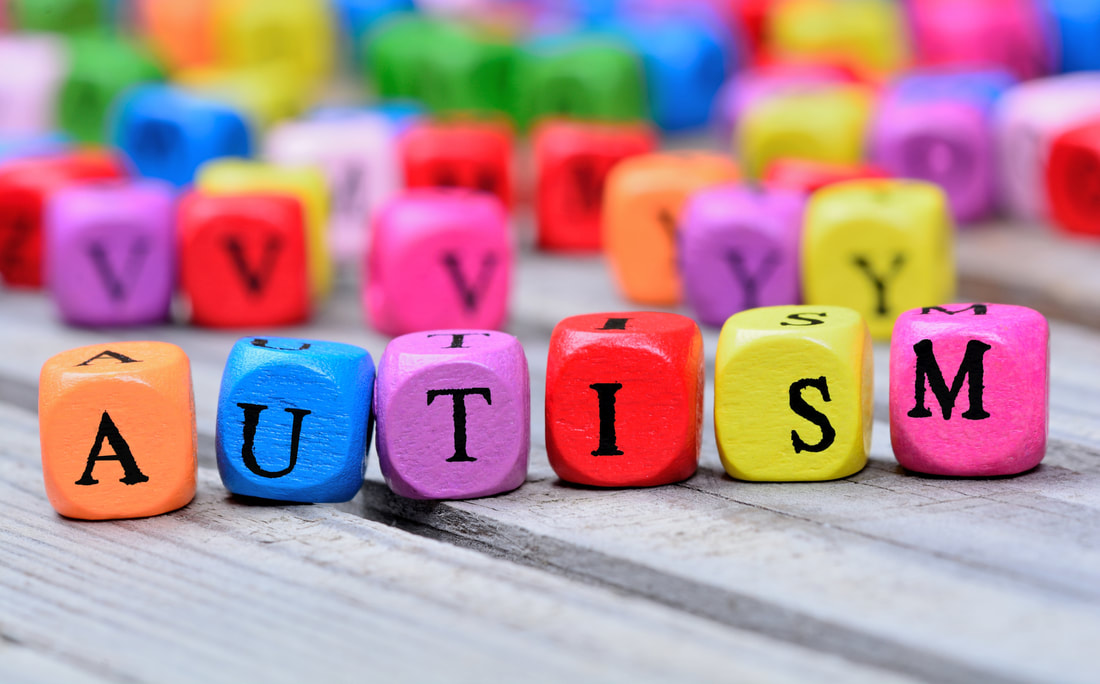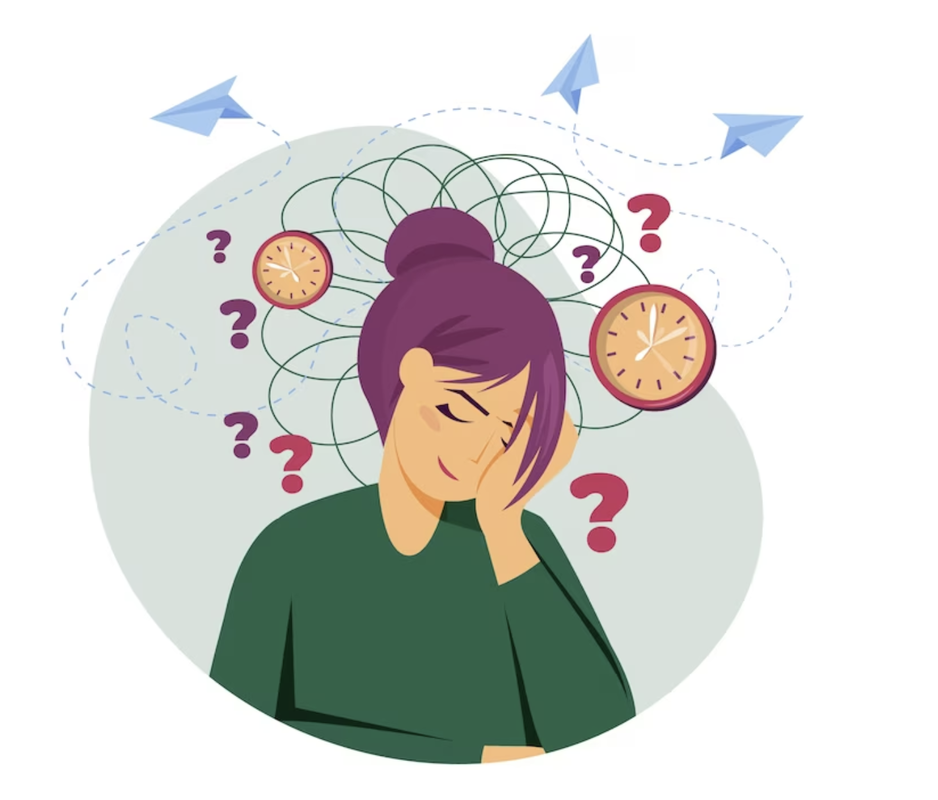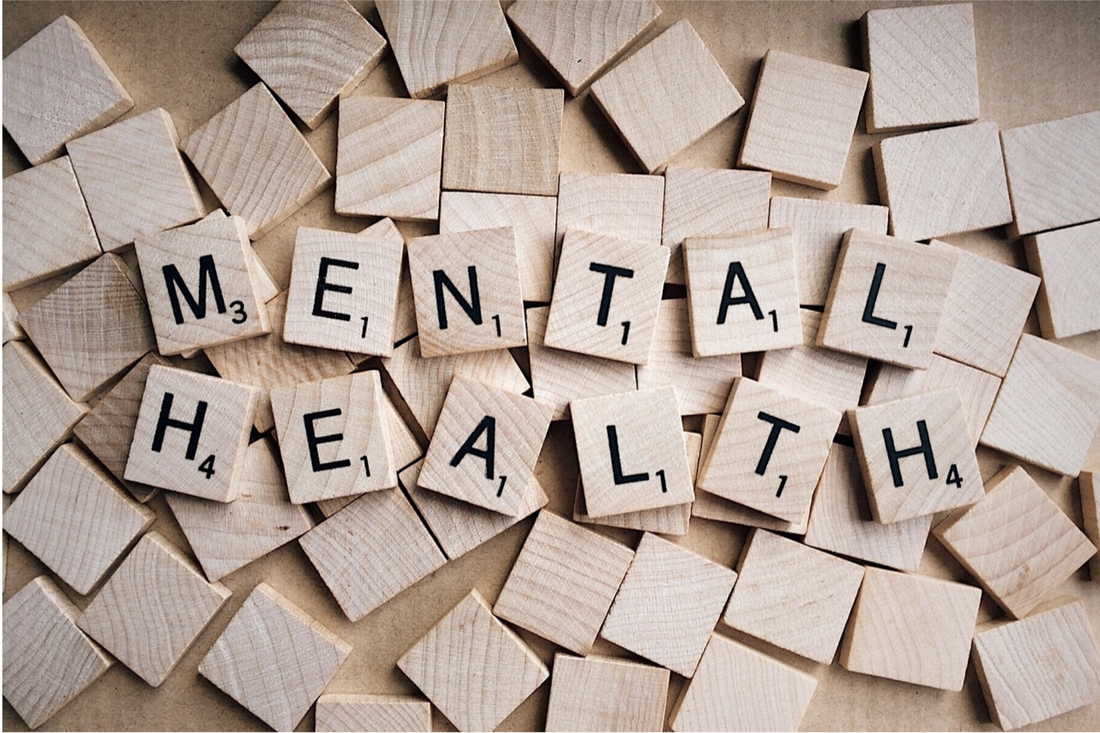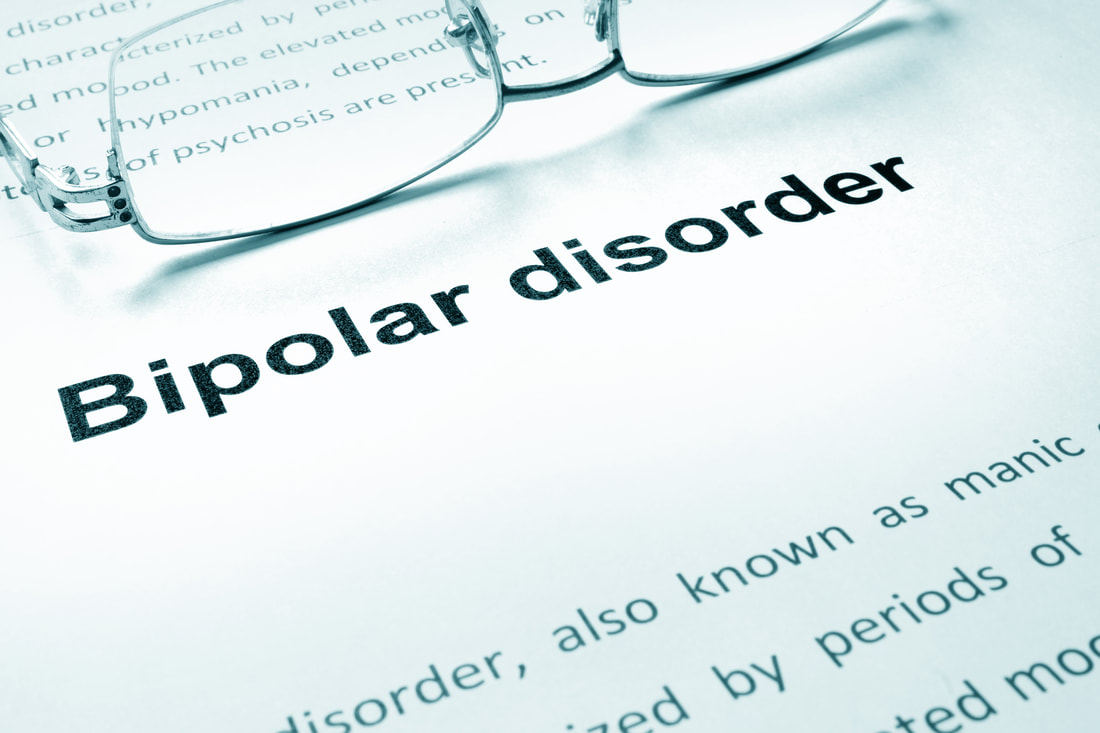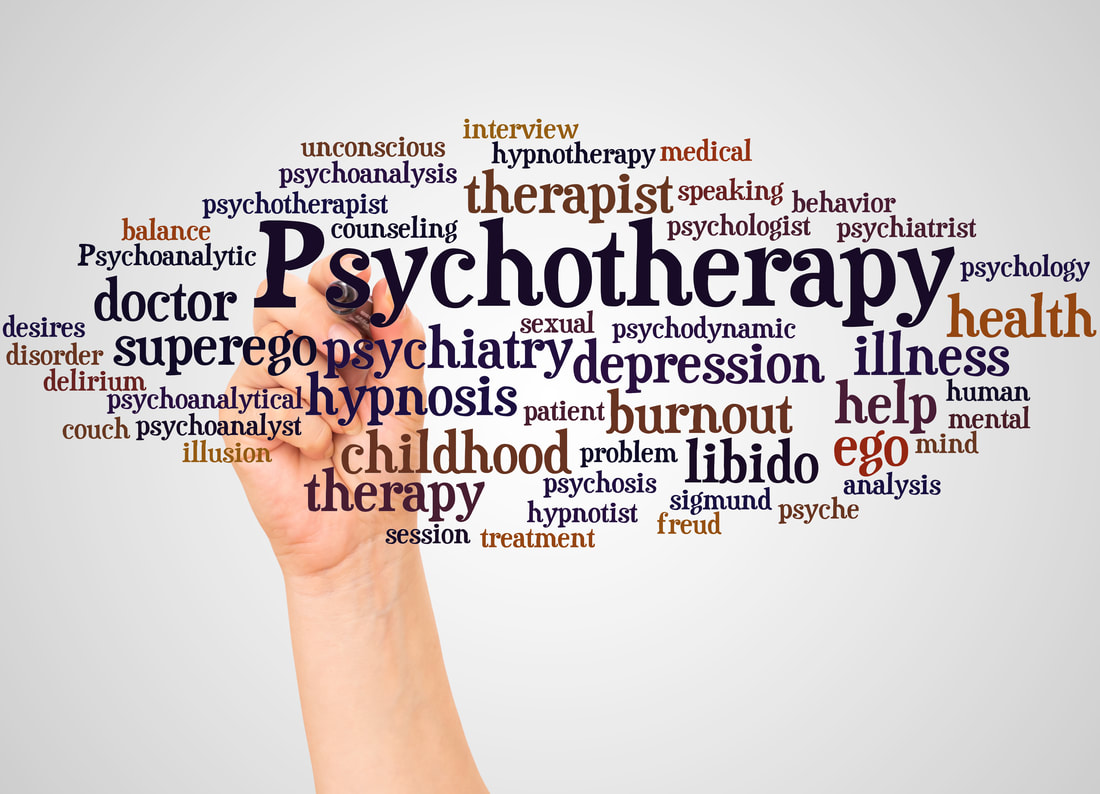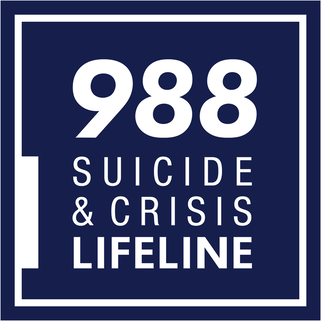|
Most people find themselves feeling down in the dumps from time to time. While psychological therapies are helpful if you’re particularly struggling, sometimes a little pick-me-up can be as simple as getting outdoors for some mood-boosting exercise and fresh air. There are plenty of ways to make the most of your time outside in order to reap the mental health benefits – let’s take a look at three activities you may want to try. COLD WATER SWIMMING  Photo by Dallas Morgan on Unsplash Swimming is great for your physical and mental health, no matter where you choose to do it. However, many people find that cold water swimming outdoors offers many more perks than simply taking a dip in the pool. Ultimately, movement is good for the body, and the healthier the body, the healthier the mind. In fact, swimming in cold water can cause a huge surge in happiness hormones such as dopamine, serotonin and beta-endorphins. There’s plenty of research to back this up, too – according to the National Library of Medicine, 95% of people with depression surveyed in the UK observed a reduction in symptoms when they started cold water swimming, along with 98.4% of those with anxiety. Obviously, you should use good judgment and make sure the water isn't too cold and that you aren't staying in the water long enough to cause any harm to yourself. GARDENING  Photo by Benjamin Combs on Unsplash Gardening can be a wonderful way to boost your mood, and is suitable for all ages and abilities. People tend to enjoy gardening for different reasons – for some, it offers a moment of relaxation and respite amongst the sights and sounds of nature. For others, a bit of hauling soil, tough weeding and generally getting their hands dirty can be an enjoyable way to get some gentle exercise. Whether you’re planting a few bulbs or fully landscaping your garden, it’s clear that gardening makes us feel good. It allows us to focus on the present moment, get creative, and ultimately feel rewarded as we see our hard work pay off. SKETCHING  Photo by Ilnur Kalimullin on Unsplash When it comes to expressing and soothing our emotions, art activities work so well that even some professional counsellors make use of them in therapy sessions. There’s no right or wrong way to take part in art therapy – in fact, dance, music and writing are all popular forms of this type of treatment.
Of course, you don’t have to seek counselling to reap the mental health benefits of art. Getting your thoughts and feelings down on paper can be as simple as taking your sketchbook to the local park, or setting up your easel somewhere with a beautiful view. Getting creative outdoors is preferred because it allows for a change of scenery, plenty of fresh air, and ultimately lots of useful inspiration – each of which goes a long way in making us feel good. RELAX AND RESTORE When you’re looking for a mental health boost, one of the best things you can do is get outside. Whether you choose to try an activity or not, simply existing in a calm, natural environment can help you to get some headspace, relax, and feel restored.
0 Comments
When people speak of healthy living, it can be easy to think they’re only discussing diet and exercise. But self care is a huge aspect of our wellbeing which many people simply don’t prioritize enough. While eating healthily and exercising regularly are parts of physical self care, it’s important to not forget to nurture our mental and emotional health too. Only when all of these areas are balanced can we feel truly de-stressed, content and on top of our busy, chaotic modern schedules. Coming up, we explore just why taking care of yourself holistically is an essential part of healthy living. You Can’t Give From an Empty Cup Between work, parenting, maintaining social relationships and all the other responsibilities we put upon ourselves, it can feel like there’s little time left to devote solely to ourselves. But the truth is that continuously giving away all of your energy to these other people and tasks, without replenishing it, will lead you to a place of burnout and overwhelm. By making self care a priority, you can recenter and recharge yourself emotionally, so you have enough energy to be able to deliver your best version of yourself to all of the areas of your life. Whether it’s by taking a long walk, a hot bath, or turning off your devices to enjoy an hour of uninterrupted peace curled up with a good book – self care is whatever makes you feel centered, calm and re-energized. You’ll Be More Productive Especially if you have an intensive workload, making time for self care is essential to being able to remain productive and efficient at work. Taking regular breaks can help to keep your mind focused without becoming overwhelmed and stressed, or you could try to break down your tasks into manageable chunks between restful periods where you allow yourself to switch off. Being chronically stressed causes very real, physical consequences throughout our bodies. High blood pressure, headaches, stomach discomfort and difficulty focusing are all signs that you need to take some time to rest and soothe your mind and central nervous system. Never stopping or slowing down can also impact your sleep cycles and cause insomnia, which will only make the next day harder. Self Care Boosts Happiness Aside from lower stress levels, regularly practicing self care boosts your overall happiness. While at first it can seem selfish and indulgent to have some ‘you time’ when you have a to-do list a mile long and a never-ending string of demands to meet, starting a self care routine is a key element of long-term contentment and happiness. Think about the things that make you feel happy, and carve out a little time each day to dedicate just to yourself. It doesn’t have to be a long period of time, but it does need to be regular enough to make an impact on your wellbeing. Start Today The thing about stress is that it builds and builds until we reach a point where we just
burnout. Self care is a powerful tool for breaking the cycle and recentering yourself before you become overwhelmed. If you’re feeling anxious, frustrated or overburdened, be sure to schedule some time to focus on whatever makes you feel most like yourself. Health and wellness significantly depend upon the choices people make. Often, in the pursuit of health, people come across confusing options. It becomes necessary to look at each option more deeply to separate fact from fiction and make a wise choice. In the circles of fitness enthusiasts and the quest for a fit physique, a protein shake is an option that often inspires debates and questions. Some people cannot imagine their fitness journey without the aid of protein shakes, while some insist that protein shakes are just extra liquid calories. This article will delve into the complex interplay between protein shakes, calories, and weight loss and explain the science behind it to enable informed decisions. Protein Shakes and Weight Management Under normal circumstances, an adult human being requires 45 to 65 grams of protein a day. The requirement increases when a person consciously tries to build lean muscle mass and frequently exercises for longer durations. Higher protein intake can aid in weight loss. Studies have shown that, as compared to other macronutrients, protein keeps a person full for longer. This effect is partly due to the release of GLP-1 and PYY, the fullness hormones. A higher intake of protein is associated with decreased appetite and a diminished desire to eat. Moreover, when combined with strength training, protein shakes can help build muscles. They may also increase metabolism temporarily. These effects and multiple studies support the claim that protein powders can aid weight management. Along with supporting weight loss, protein shakes also minimize short-term weight regain. Calorie Consumption From Protein Shakes However, with protein shakes, there is an increased risk of excess calorie consumption, especially if a person does not have sufficient understanding or knowledge. Typically, all protein shakes have some carbohydrate content and varying amounts (and even types) of protein. Some protein shakes have a higher sugar and fat content. These differences between protein shakes and the way people consume them can affect the calorie intake. People either purchase pre-made liquid shakes or use protein powders and other ingredients to make their own shakes. The problem with purchased liquid shakes (non-standard versions) is that it is difficult to figure out the ingredients and calculate the calorie content. The pre-made store-bought versions do have ingredients and calorie content listed on the labels, but in a hurry, people often skip reading these. When preparing protein shakes at home, it is quite possible to forget to count the calories from the other added ingredients. All such factors can lead to higher-than-intended calorie consumption. The Right Way to Use Protein Shakes While selecting protein powders or shakes, it is important to study the ingredients and calorie content. Ideally, the protein shake should have minimal amounts of added sugar and fat.
Avoid depending on protein shakes as the sole source of nutrition. Rather, for maximum benefits, it is better to incorporate protein shakes into a balanced but low-calorie diet. Additionally, it is vital to increase physical activity in conjunction with the consumption of protein shakes. Pay attention to the frequency of consumption as well as the portion size. It is advisable to follow recommended serving guidelines. Conclusion Whether a protein shake will act as a weight loss aid or just extra liquid calories depends on its composition as well as the manner of consumption. In general, protein shakes can prove beneficial for weight management. However, moderate consumption along with a balanced diet is desirable for maximum effectiveness. Careful scrutinization of the nutritional profile is necessary when purchasing protein shakes or powders. It is best to consult a doctor or dietician before starting any protein supplements. Autism is a disorder that affects individuals in various different ways, with the most common struggles being focused on communication and sensory challenges. Although it’s a disorder that’s commonly associated with young children, it’s important to understand that there’s a large population of adults with similar struggles.
While adults might be better equipped to handle the challenges that autism presents, this isn’t always the case. Without a diagnosis or advanced psychological knowledge, it can be stressful for autistic people to understand why they seem to see the world so differently from their peers. In this guide, we explore the signs of autism in adults, the challenges they may face, and what others can do to offer support. Understanding how autism can present in adults Autism, also known as Autism Spectrum Disorder (ASD), represents a wide range of different characteristics and behaviors. There are many common misconceptions about autism, and it’s important to recognize that it can present differently in everyone. In children, some of the commonly known signs include avoiding eye contact, being unusually sensitive to noises or touch and engaging in repetitive movements, amongst others. However, in adults, particularly in those who only receive a diagnosis later in life, the signs of autism can be very different. Adults whose struggles weren’t recognized as a child are likely to develop coping strategies to better fit into the world around them. They might appear to perform better in social situations or conceal some of their traits around others, but these are typically learned behaviors. It can be exhausting for autistic adults to try to live this way, eventually leading to feelings of exhaustion and burnout. Challenges that autistic adults may face Sensory issues As seen in children, autistic adults often struggle with similar sensory issues. They might find large crowds or loud noises overstimulating, leading to irritability or even feelings of panic. Or perhaps they are extremely picky about the clothes they wear, opting for soft and smooth fabrics that can bring comfort. Difficulty with communication Social interactions can be challenging for those with autism. They might struggle to understand unwritten social rules or cues, or misinterpret comments that may have been intended as a joke. One of the reasons for this is that it can be difficult to read body language in order to make sense of these situations, which is something many non-autistic people may do without even realizing it. This can make it difficult to make friends, as not everyone will be understanding and patient enough. Not only that, but as it requires a lot more thought to simply spend time with friends, the relationships can feel mentally draining. Executive functioning A more unrecognized side of autism in adults is difficulty with executive functioning. Executive functioning refers to our basic mental skills that are responsible for planning, remembering and completing tasks. Those with autism may lack these skills, making it difficult for them to effectively manage their time and keep on top of daily tasks. How you can support adults with autism The key to supporting autistic adults, whether officially diagnosed or not, is to be understanding. It can be easier to imagine what they’re thinking when you’re informed about how autism can affect the way we view the world, so try to educate yourself as much as possible. Once you have an understanding of the characteristics of autism, try to create an environment that is inclusive of them. For example, many autistic adults will appreciate more direct communication without any hidden messages or non-verbal clues. This can make it much easier to communicate, particularly if they feel encouraged to do the same without facing judgment. It’s a common misconception that autistic people are unable to lead fulfilling lives. While they do often face unique challenges, there are thousands of people who go on to have successful careers and form meaningful relationships in spite of their disorder. As long as they’re in an environment that is supportive, autistic adults have plenty of unique skills and abilities to offer that can be an asset to both work and personal life. By recognizing and understanding their potential struggles, we can work to develop a world in which everyone can flourish. ADHD is no longer solely a neurodevelopmental disorder that exists in childhood; it can persist into adulthood, affecting various aspects of daily life. This article delves into the comprehensive understanding of Adult ADHD and explores multiple methods of recognition, treatment options, and even natural remedies to help individuals manage this condition effectively.
Understanding Adult ADHD Adult ADHD, often overlooked or misdiagnosed, can create significant challenges for those affected. The first step towards effective management is recognizing its presence. The symptoms of Adult ADHD may vary from individual to individual but can include:
Recognizing Adult ADHD Recognizing Adult ADHD requires self-awareness and the observation of key behavioral patterns. If you suspect you or someone you know may have Adult ADHD, consider:
Controlling and Treating Adult ADHD Managing Adult ADHD often involves a multi-faceted approach tailored to the individual's needs and preferences. Here are some effective strategies:
ADHD Treatment Medications also play a crucial role in managing ADHD symptoms effectively. Adderall, Vyvanse, and Ritalin are some of the most commonly prescribed medications. These medications, known as stimulants, work by regulating neurotransmitters to enhance focus and reduce impulsivity. Non-stimulant options like Strattera or Qelbree may also be considered, particularly for those who don't respond well to stimulants or have concerns about potential side effects. It's crucial to emphasize that more than medication is required. Adderall, Ritalin, or Vyvanse is not a one-size-fits-all solution; your healthcare provider should personalize the dosage and treatment plan. Also, a comprehensive treatment plan often combines medication with therapy, lifestyle adjustments, and natural remedies to provide a holistic approach to managing Adult ADHD. Conclusion Adult ADHD is manageable, and accepting it is the first step towards effective control and treatment. Whether through medication like Vyvanse, therapy, lifestyle adjustments, or natural remedies, numerous strategies are available to help individuals lead fulfilling lives while managing their ADHD symptoms. Remember that seeking professional guidance is essential, and with proper support, those with Adult ADHD can thrive in their personal and professional lives. Incorporating health and wellness activities into your everyday routine is a mood-booster. Taking just 30 minutes to an hour out of your day to perform some mindfulness activities will put you in a better mood and help you conquer your day. Try one of these trending health and wellness activities to help you set goals and restore your mental health. 1. Digital Detox You might have seen a friend on Facebook or someone you follow on Instagram post something like, “Taking a break from social media. Reach out if you have my number.” They’re on a digital detox journey, unplugged from their online life to reconnect with their physical world. Reducing your screen time can help you get a better night's sleep, free up time for other tasks, and reconnect with your in-person relationships. 2. Scribble Journaling Combine the benefits of art therapy and journaling to express your thoughts and emotions. When your brain is running 100 mph, scribble it out. If you have words, stories, or feelings you need to get out, write them as they come to your brain, no matter how fast and messy the process is. Scribble journaling involves allowing your mind to wander and make abstract, spontaneous marks on paper. Suppose you have no words, just scribble or draw it on your paper. This unusual activity can help relieve stress, reduce anxiety, and tap into your inner creativity. It also encourages mindful self-reflection, so grab your pen and paper and start scribbling. 3. Art Therapy Ask your healthcare provider to connect you with a board-certified art therapist to help you express yourself creatively. While you can make art by yourself, a clinician combines the activity with therapy to work toward healing. Art therapy offers a supportive environment to process thoughts, reduce stress, and manage anxiety. Providers for Healthy Living has art therapists on staff who are ready to help. 4. Gardening Pick up some seeds, soil, and gardening gloves. Gardening is an excellent wellness activity you can sink your hands into. Nurturing a plant from seed to sprout, and throughout maturity, is a fulfilling process. Gardening and even mowing improves mental health. It provides exercise, mood-boosting Vitamin D, and reduced stress levels. 5. Walk With Nature A long walk with the right mindset can help you reduce your weight and bolster your mental health. Find a fresh path to explore, listen to the birds chirp, feel the sunshine on your skin, and move around. Nature walks are green therapy that can help battle anxiety, depression, and stress. 6. Fitness Apps If you don’t want to go outside, no problem. Plenty of companies and trainers offer fitness apps and videos online so you can join a class from the comfort of your own home. They provide customized approaches and progress monitoring to keep you on track with your results. Many also offer nutrition guidance and a variety of workout styles, including quiet workouts tailored to upstairs living. When working a new activity into your routine, choose something you enjoy and that aligns with your goals. If you don’t like walking, you don’t have to. Try gardening or journaling instead. There are so many health and wellness activities to try, and there is no one-size-fits-all answer, so find the one that works for you. Gina Thompson is an experienced multimedia journalist, producer, and content writer born and raised in Texas. In her spare time, she loves catching a live band, dancing, and finding the next big taco spot. As a writer, she is passionate about making a positive impact on her community by elevating the voices and stories that need to be heard. Calming the Chaos - Strategies for Nurturing Mental Well-Being in a Busy Life by Catherine Baltimore7/24/2023 In the whirlwind of contemporary life, maintaining mental health often becomes a challenge. We find ourselves entwined in a multitude of responsibilities and demands. Amid this hustle, nurturing our mental well-being is essential to live a balanced, contented life. This article explores strategic techniques to calm the chaos and bolster mental health.
Creating a Routine In the first place, crafting a structured daily routine can foster a sense of stability. The predictability it offers minimizes anxiety by enabling you to anticipate and prepare for each activity. A routine should include health-promoting habits such as regular meals, adequate sleep, physical activity, and relaxation periods. In crafting your routine, you should consider the body's circadian rhythm. This biological clock governs our energy levels and alertness throughout the day. By aligning your routine with this rhythm, you enhance productivity and reduce stress. Lastly, while designing your routine, it's important to include periods for relaxation. It might seem counterintuitive in a busy life, but taking time to unwind is crucial. These relaxation periods are the moments when you recharge and prepare yourself for upcoming tasks. Mindfulness and Meditation Next, mindfulness and meditation are pivotal tools for mental well-being. These practices cultivate a state of intentional, non-judgmental awareness of the present moment. It can help you distance yourself from overwhelming thoughts and feelings. Meditation can be incorporated into your daily routine by dedicating a few minutes each day to sitting in silence, focusing on your breath, or perhaps a calming visual or mantra. Regular practice not only reduces stress but also enhances focus, empathy, and emotional stability. Mindfulness, on the other hand, can be practiced throughout the day. It involves fully engaging in the current activity, whether you're eating, working, or simply walking. By focusing on the present, you distance yourself from past regrets and future anxieties. Choosing the Right Insurance Interestingly, selecting appropriate insurance also plays a role in mental well-being. Having an insurance policy reduces worries about potential financial burdens due to unforeseen circumstances like illness, accidents, or property damage. Health insurance, for instance, often includes mental health services such as counseling or therapy. Knowing you have access to these services without incurring a significant financial burden can provide a sense of security. Additionally, life insurance policies can ease anxieties related to the well-being of your loved ones in your absence. An umbrella insurance policy, on the other hand, provides additional liability coverage beyond standard insurance policies, mitigating fears about potential lawsuits or substantial liability claims. Before purchasing any insurance, it's crucial to thoroughly research and compare options - you can compare with Assurance IQ online quote if you want a thorough analysis of each insurance policy. An insurance policy should align with your needs and financial capabilities. The right insurance can help create a safety net, reducing stress and contributing to mental peace. Social Interactions and Relationships Human beings are inherently social creatures. Interactions and relationships play a critical role in our mental well-being. Having a strong social network provides emotional support, reduces feelings of loneliness, and can even improve physical health. It's important to foster relationships that are positive and nurturing. Avoiding toxic or draining relationships helps in maintaining emotional balance. Moreover, spending quality time with loved ones, engaging in shared hobbies, or participating in group activities can significantly improve mental health. However, remember that it's equally important to have time for yourself. Understanding your need for personal space and solitude is essential in managing your mental well-being. Physical Health and Exercise Physical health is intricately linked with mental health. Regular exercise, a balanced diet, and adequate sleep are fundamental to maintaining mental well-being. Exercise releases endorphins, also known as "feel-good" hormones, that can alleviate symptoms of depression and anxiety. The diet also impacts your mental health. Consuming a diet rich in fruits, vegetables, lean protein, and whole grains can promote better mental health. Limiting the intake of processed foods, sugary drinks, and excessive caffeine can also significantly improve your mood and energy levels. Adequate sleep, on the other hand, is the time when the body repairs itself. It improves memory, boosts mood, and reduces stress levels. Ensuring seven to nine hours of quality sleep each night is a critical part of nurturing mental health. Continual Learning and Personal Growth Lastly, engaging in continual learning and personal growth activities can also greatly benefit your mental well-being. Taking time to develop new skills, broaden your knowledge, or pursue a hobby fosters a sense of accomplishment and self-worth. It diverts the mind from stress and offers a rewarding challenge. Whether it's reading a book, enrolling in an online course, learning a new language, or practicing a musical instrument, such activities can stimulate your mind and offer respite from the busyness of everyday life. Conclusion Amid our hectic schedules, prioritizing mental well-being is paramount. By adopting strategies such as a structured routine, mindfulness, appropriate insurance, positive social interactions, and prioritizing physical health, you can calm the chaos and foster a healthy mind. Remember, mental health is not a destination but a journey, and each small step makes a big difference. What is bipolar disorder?
Bipolar disorder is a mental illness characterized by extreme mood swings, which can range from manic or hypomanic episodes to depressive episodes. It is also referred to as manic-depressive disorder.
Why do some people develop bipolar disorder? The exact cause of bipolar disorder is not known, but research suggests that a combination of genetic, environmental, and brain chemical factors may play a role in its development.
How common is bipolar disorder? Bipolar disorder is a relatively common mental illness, affecting an estimated 2.8% of the adult population in the United States. It can develop at any age, but the average age of onset is 25 years old. Bipolar disorder affects men and women equally, and it is found in all racial and ethnic groups. It is estimated that more than 60 million people worldwide are affected by bipolar disorder. The disorder can have a significant impact on a person's daily life, including their relationships, work, and overall quality of life. Despite its prevalence, bipolar disorder is often misdiagnosed or not diagnosed at all, which can delay proper treatment and management. This highlights the importance of seeking professional evaluation if you suspect you or a loved one may be experiencing symptoms of bipolar disorder. How do you treat bipolar disorder? Bipolar disorder is a treatable condition, and a variety of treatments are available to help manage symptoms and improve quality of life. The most effective treatment plan for bipolar disorder typically includes a combination of the following:
What non-medication treatments are helpful for bipolar disorder? In addition to medication, there are several non-medication treatments that can be helpful for individuals with bipolar disorder:
What if you have suicidal thoughts? If you are feeling suicidal, it is important to reach out for help immediately. Here are some steps you can take:
How can you help a loved one who has bipolar disorder? If you have a loved one with bipolar disorder, there are several ways you can support them and help them manage their symptoms:
Providers for Healthy Living offers medication management and therapy options for patients dealing with bipolar disorder. If you or a loved one are struggling with any of these symptoms, contact us today. We are here to help! What is psychotherapy?
Psychotherapy is a type of treatment that aims to help individuals overcome psychological difficulties and improve their mental health and well-being. It involves talking to a trained mental health professional, such as a psychologist, psychiatrist, or counselor, in a structured and supportive setting. During psychotherapy sessions, the therapist helps the client explore and understand their thoughts, feelings, and behaviors, and identify underlying patterns and causes of distress. The therapist may use a variety of techniques and approaches, such as cognitive-behavioral therapy, psychodynamic therapy, or humanistic therapy, to help the client gain insight, develop coping strategies, and make positive changes in their life. Psychotherapy can be beneficial for a wide range of mental health issues, including anxiety, depression, trauma, personality disorders, and addiction. It can be conducted one-on-one, in groups, or with families or couples, and may involve short-term or long-term treatment depending on the individual's needs and goals. How does psychotherapy help with mental disorders? Psychotherapy can help with mental disorders in a variety of ways. Here are some examples:
Overall, psychotherapy can be a powerful tool for individuals struggling with mental disorders, as it provides a structured and supportive environment to help them understand, manage, and overcome their symptoms. What are some common types of psychotherapy? There are several different types of psychotherapy, each with its own approach and techniques. Here are some common types of psychotherapy:
It's important to note that different therapists may use different techniques and approaches, or combine multiple approaches to tailor treatment to the individual's specific needs and goals. What mental disorders are commonly treated with psychotherapy? Psychotherapy can be used to treat a wide range of mental health disorders, including:
In addition to treating specific mental health disorders, psychotherapy can also help individuals develop coping skills, improve communication and relationships, manage stress, and enhance overall well-being. It's important to note that different types of psychotherapy may be more effective for certain mental health disorders, and that treatment plans should be tailored to meet the individual's specific needs and goals. A mental health professional can help determine the most appropriate type of psychotherapy for a particular individual. What types of mental health professionals provide psychotherapy? There are several types of mental health professionals who provide psychotherapy, including:
It's important to note that the specific credentials and training of mental health professionals can vary depending on the country or region. It's always a good idea to do some research and ensure that the mental health professional you are considering is licensed or certified to practice in your area. Are there any side effects from psychotherapy? In general, psychotherapy is considered a safe and effective treatment for mental health issues, and it is unlikely to cause any serious side effects. However, some individuals may experience some mild or temporary side effects, such as:
It's important to discuss any concerns or side effects with your therapist and work together to address them. Additionally, it's important to have a clear understanding of the goals and expectations of therapy before starting, and to communicate any concerns or questions with your therapist. Providers for Healthy Living offers medication management and therapy options for patients dealing with a wide range of mental health problems. If you or a loved one are struggling, contact us today. We are here to help! What is depression?
Depression is a mental disorder characterized by persistent feelings of sadness, hopelessness, and a lack of interest in activities. It can also cause physical symptoms such as changes in appetite, fatigue, and difficulty sleeping. Depression can be caused by a combination of genetic, biological, environmental, and psychological factors, and can negatively impact a person's ability to function in daily life. It is treatable with therapy, medication, and lifestyle changes. Why do some people become depressed? Depression can develop for a variety of reasons. Some possible causes include:
How common is depression? Depression is a common mental disorder that affects a significant portion of the world's population. According to the World Health Organization (WHO), more than 264 million people of all ages suffer from depression globally. In the United States, it is estimated that about 7.1% of adults (17 million people) have experienced at least one major depressive episode in the past year. The prevalence of depression varies across different countries and populations, but it is a widespread issue that affects people of all ages, genders, and backgrounds. How do you treat depression? Depression is treatable, and several effective treatments are available. The most common treatments for depression include:
What non-medication treatments are helpful for depression? While medication and psychotherapy are the most commonly recommended treatments for depression, some people may choose to use natural remedies as an additional or alternative treatment. However, it is important to note that natural remedies should not replace professional medical treatment, and it is always best to talk to a medical professional before starting any new treatment. Here are some natural remedies that may help with depression:
What if you have suicidal thoughts? If you are feeling suicidal, it is important to reach out for help immediately. Here are some steps you can take:
How can you help a loved one who has depression? If you have a loved one who is experiencing depression, there are several ways you can support them and help them through this difficult time:
Providers for Healthy Living offers medication management and therapy options for patients dealing with depression. If you or a loved one are struggling with any of these symptoms, contact us today. We are here to help! |
|
Please DO NOT use this email address for medication refill requests or for emergency situations.
Click here for refill requests instead of using email: Medication Refill Request Form If you have a medical emergency, email is never the appropriate way to communicate your needs, and you should instead call 911 or go to the nearest ER. If you are having suicidal thoughts and need to speak to someone immediately, you can contact Suicide Prevention Hotline at the number (and link) below. [email protected]
Communications via email are not secure. Although it is unlikely, there is a possibility that the information you include in an email can be intercepted and read by other parties besides the person to whom it is addressed. |
|
2024 Providers for Healthy Living | All Rights Reserved
|




